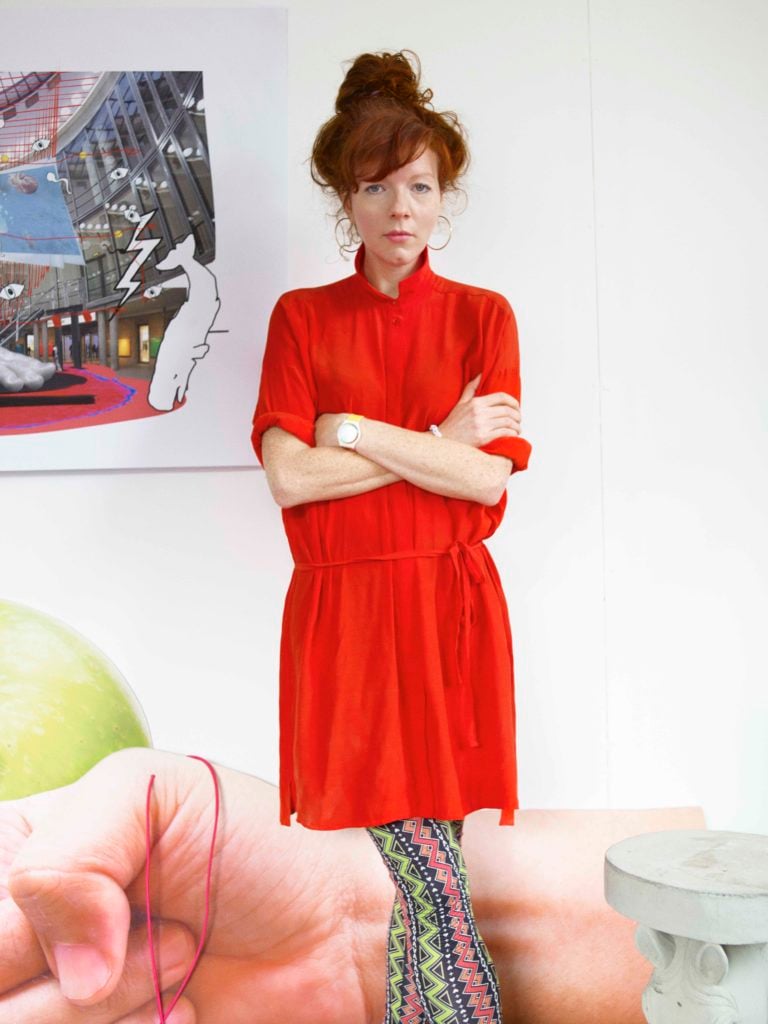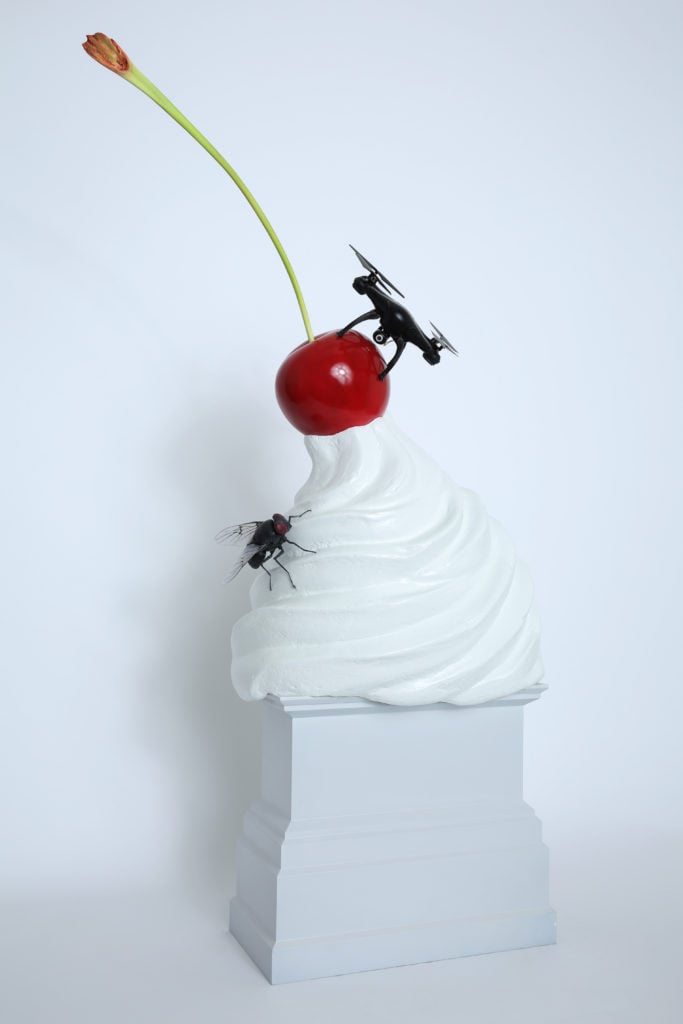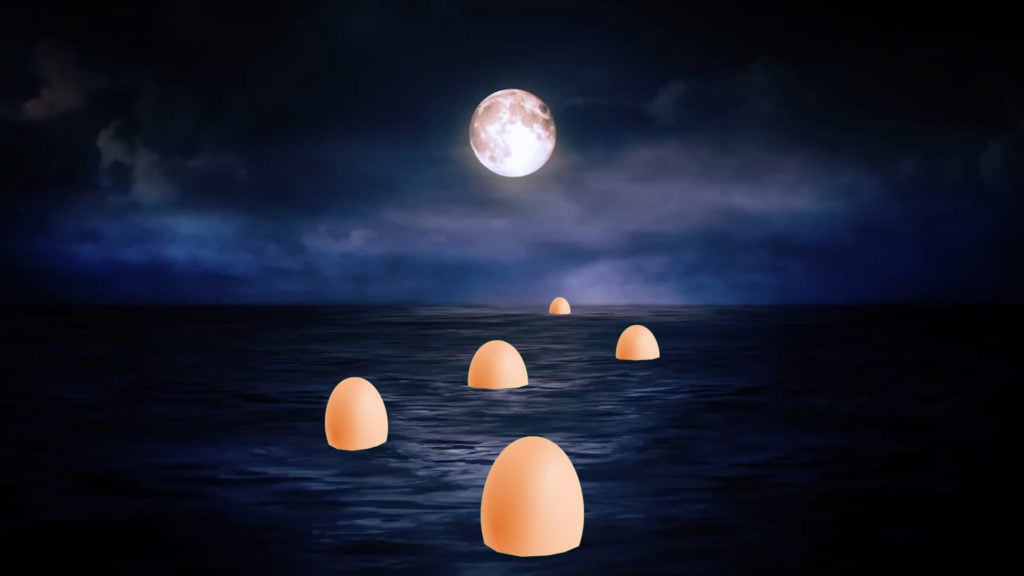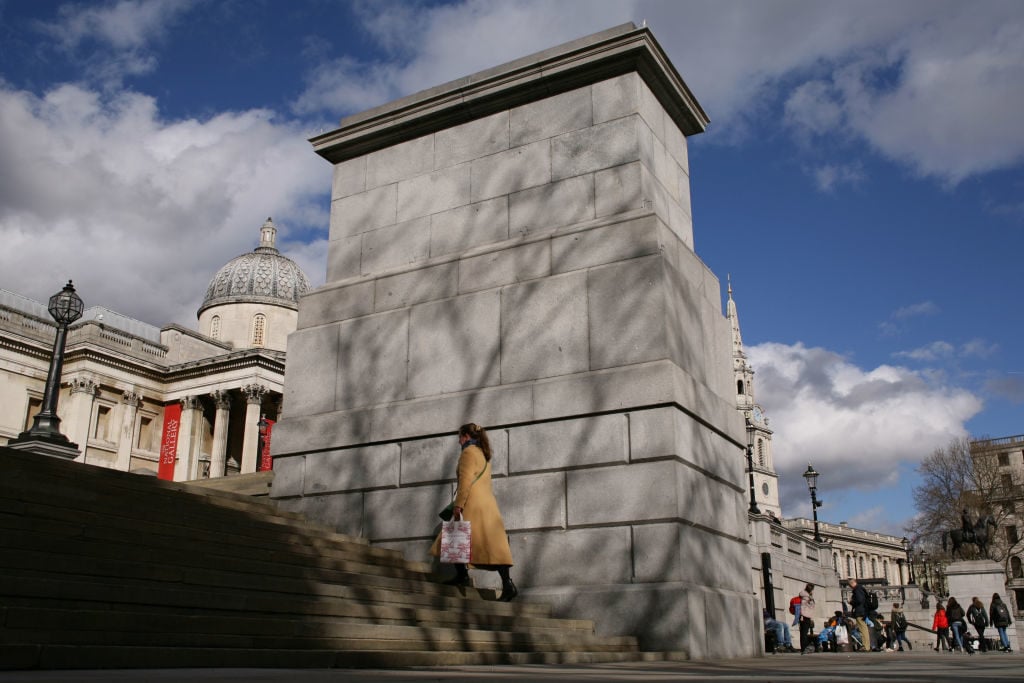People
‘All My Works Are Harbingers’: How Fourth Plinth Artist Heather Phillipson Found Dark Meaning in the Delay of Her Career’s Biggest Break
The artist discusses her whipped cream sculpture that would have been unveiled in London this week.

The artist discusses her whipped cream sculpture that would have been unveiled in London this week.

Naomi Rea

The artist Heather Phillipson has won one of the most prestigious art gigs in London: a coveted spot on the Fourth plinth, the two-year public art installation smack in the middle of the city in Trafalgar Square. But while the splashy unveiling of her new sculpture was scheduled to take place yesterday, the plinth remains empty.
With the public locked in at home all over the city, Phillipson’s big moment has been postponed. London’s deputy mayor for culture and the creative industries, Justine Simons, made the difficult decision to delay the installation until “Londoners and visitors can properly enjoy it.”
“It feels appropriate that this should pause along with the rest of human activity,” Phillipson, who is 41, told me of the development. The UK is now on a partial lockdown and everyone but key workers are being advised to stay at home. Asked what she is doing to stay grounded and inspired during her period of isolation, the artist said she is reading, drawing, dreaming, watching the spring emerging, “rethinking everything,” and playing with her dog, who has “always known how to be in the present tense,” Phillipson said.
A few weeks ago, when London was still blissful and bustling, I met the artist at a bar around the corner from her Hackney studio to discuss the commission. Phillipson first made her proposal for the sculpture in 2016. Titled THE END it feels particularly poignant now as life as we know it has ground to a stuttering halt.
“You could say that all my works are harbingers in some way,” Phillipson told me then. But the work was not necessarily a foreshadowing. Rather, she explained, the piece could be read as a “direct response” to things that were already in motion. “It feels like, politically, entropy has been happening for a long time now,” she said.

Heather Phillipson, THE END. Maquette proposal for the Fourth Plinth, Trafalgar Square, 2016. Photo by James O. Jenkins. Image courtesy of the artist.
Phillipson’s sculpture for the plinth depicts a towering swirl of whipped cream, topped off with an enormous cherry, an oversized fly, and a hulking drone. While the full-scale sculpture has yet to be installed, the maquette has been on view at the (now shuttered) National Gallery. At first glance it seems quite joyful and Pop, but there’s a sinister overtone to the brooding figures that you can only imagine would be magnified at full size.
Phillipson explained that the context of Trafalgar Square is “crucial” to the work. Punctuated by the towering Nelson’s Column, the square is best known as a site for monuments, but the artist, who is a Londoner, doesn’t associate it with those odes to “heroic, male, and mostly war-related” figures.
With its close proximity to Westminster, the square is, for Phillipson, more a site of anti-governmental protest. Otherwise, it is a crossing-point to another destination, and occasionally, it hosts celebratory events.
“I knew that whatever I made needed to relate to all of those contexts simultaneously,” Phillipson said. “That’s where the tone of the work comes in, the exuberance in relation to the celebrations, but it is also a site of uneasiness, or distrustfulness of government, and angry, politicized, activity.”
The whipped cream has been piled high with an excessive squirt, and is designed to look as though it is spilling over the edge of the plinth. Full of air, this sort of cream will not maintain its shape for long. “It sits on the verge of collapse,” Phillipson said.
The creatures in the sculpture are not alone among the animals on the other monuments in the square, which include lions and horses. The artist, who is vegan, is deeply concerned about creatures that are often disregarded by humans: the cream derived from an animal product, the fly that we swat away from the picnic table. She even consulted an avian expert to make sure the rotating blades of the drone would not put any of Trafalgar Square’s resident pigeons in harm’s way. “That would be my worst nightmare,” she said.
The drone is a different, but related as a sort of alien life form. Its working camera has been set to transmit live footage of the square to a website, becoming a disembodied eye that offers “an interesting moment to be looking back at ourselves and the way we are doing things.”

Heather Phillipson, my name is lettie eggsyrub (2018). Still from multi-screen video installation. Commissioned by Art on the Underground. Image courtesy of the artist.
The Fourth Plinth commission is not Phillipson’s first foray into public art. She previously made a sculptural audio-video installation in which eggs are whipped and beaten in the name of human consumption—for the Art on the Underground series on London’s subway network.
Her oddball subject matter is part of the point when it comes to Phillipson’s approach to public works. “I think there’s a problem with public art in that it quite often becomes part of the corporate landscape. Often what appears to be public space is actually corporate space that has the look of public space but is managed by businesses who commission the artwork,” she said. “They are going to be artworks with an agenda or artworks that aren’t allowed to take any risks. They are there to inform of some kind of purely aesthetic function.”
Aside from Rachel Whiteread and Katharina Fritsch, Phillipson is only the third woman whose work has graced the plinth since the commission was first conceived in 1999.
“Obviously history has been dominated here by the straight white male and I think that’s something that needs to be upset urgently,” Phillipson said. “I don’t know how much of a space me doing stuff necessarily opens up to other people, but if I’m ever invited to propose people for things, that definitely informs my thinking about who I would propose as that’s a normative standard that I would like to disrupt.”

The empty Fourth Plinth in Trafalgar Square. Photo by David Cliff/NurPhoto via Getty Images.
We looked for a note of optimism to end on. Perhaps in the future, the “deeply troubling” political and environmental system we already have been living in could be upended. Perhaps humanity might “reflect on our relationships to other creatures, to the environment, to each other.”
Aside from the plinth, Phillipson has been working on an audio work for radio, a 30-minute journey with an ear that floats off into space to listen back to the earth. Like the fly and the drone on her sculpture, the disembodied ear offers an elevated, aerial perspective that enables an escape from “the bullshit politics on the ground.”
We briefly discuss her next big project, the Duveen Gallery commission for Tate Britain, which is meant to open on June 22. It too will be populated by mutants that might inspire some self-reflection.
When we approached each other to say goodbye, there was hesitation. “The fear of getting close to other bodies is also a very powerful way of ruling people,” she said. It feels somewhat defiant, although looking back perhaps ill-advised, that we ended our meeting with an embrace.